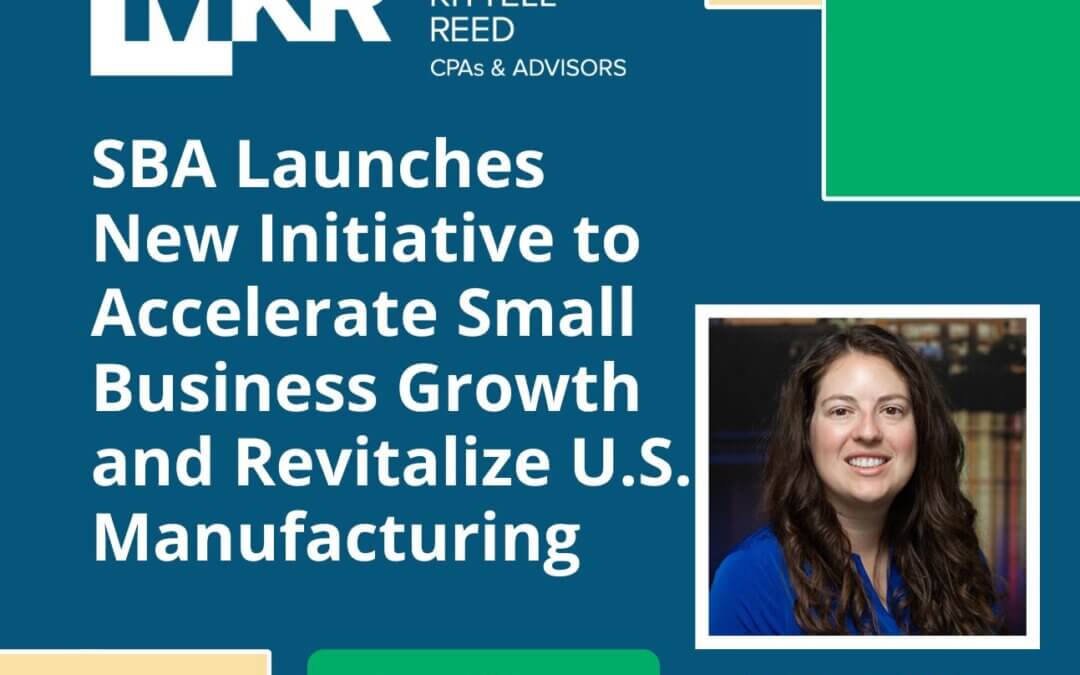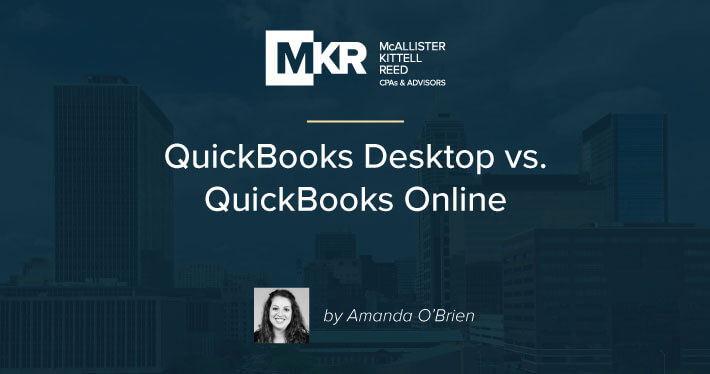
by Amanda O'Brien | Accounting News, News, Newsletter, Retirement, Retirement Savings
A 401(k) is often thought of as a set-it-and-forget-it kind of account—set a contribution amount, bank on a company match, and let the market do its thing. But if you haven’t checked in on your plan lately, you might be missing out on some significant new features.
Thanks in part to the SECURE Act 2.0, a handful of updates are giving retirement savers more flexibility, more control, and more ways to grow their money. Whether you’re just starting out or racing toward retirement, here are some under-the-radar 401(k) features worth knowing about.
Super Catch-Up Contributions
Starting this year, if you’re between the ages of 60 and 63, you can contribute an extra $11,250 to your 401(k) beyond the standard catch-up amount ($7,500 for workers over 50). This is due to a provision in the SECURE Act 2.0, and it gives late-career workers a valuable second wind to boost their savings.
Easier Access to Hardship Withdrawals
Hardship withdrawals have always been part of the 401(k) landscape, but the SECURE Act 2.0 made the process simpler. The updated rules remove some of the documentation hurdles, and many plans now allow participants to self-certify the hardship, thereby bypassing the need for an employer to sign off on the paperwork. While no one wants to dip into their retirement funds early, if life throws you a curveball with a hefty price tag, you’ll have an easier time taking a penalty-free withdrawal.
Access to Financial Advisors
Not every 401(k) offers the same cookie-cutter investment options anymore. Some plans now include a self-directed brokerage account (SDBA), which opens the door to a broader range of investment options that you can manage on your own or with the assistance of a personal financial adviser.
For seasoned investors (or those who simply want more choice and guidance), this is a major step forward. You don’t have to go it alone, and you’re not limited to just a handful of mutual funds. However, be aware that a financial advisor’s guidance will come with a fee.
Automatic Enrollment for New Hires
One issue the SECURE Act 2.0 aims to address is boosting employees’ retirement savings. Starting this year, new 401(k) plans are required to enroll eligible employees automatically. That means if you’re starting a new job with a qualifying employer, you’ll likely be opted into the plan by default. Automatic enrollment typically begins at 3% of your salary and increases by 1% each year, up to a maximum of 10%. It will be up to the employee to opt out if they wish to do so.
This move could make a big difference for younger workers who might otherwise delay saving. Even a modest contribution early on can grow significantly over time, thanks to the power of compound interest.
Smarter Digital Tools
Gone are the days of randomly selecting investment funds. Most 401(k) providers now offer access to online dashboards and planning tools. Although the specific digital tools may vary across providers, they can help you calculate how much to save, project your retirement income, and compare investment choices. These tools are typically free, and they’ve quietly become one of the most useful (yet overlooked) features of a modern retirement plan. Much like a GPS, these digital tools can’t drive the car for you, but they’ll guide you on the most efficient route.
Annuities
In an effort to give savers a way to turn part of their retirement savings into guaranteed lifetime income, the SECURE Act includes a provision that allows 401(k) plans to offer annuities as investment options. Despite the potential benefits, annuities are still relatively uncommon in 401(k) plans. However, interest is on the rise, so watch for them to become a more common part of 401(k) retirement planning.
Take Action
401(k) plans have evolved from an add-on feature of retirement to flexible tools that can adapt to your changing financial goals. If it’s been a while since you reviewed your plan, take a few minutes to log in and see what’s available. That small step could end up making a big difference in your retirement.

by Amanda O'Brien | Accounting News, IRS, News, Newsletter, Small Business, Tax Planning
If you use Venmo, PayPal, or CashApp to accept payments for freelance work, side gigs, or online sales, you’ll want to pay close attention to this year’s tax changes. New tax rules are making it harder to fly under the radar, even if you only earn a few thousand dollars on the side. Here’s what you need to know to stay compliant and avoid costly surprises next year.
Why the IRS Changed the Rules
In recent years, the rise of freelance and gig work and online selling has presented challenges for the IRS in tracking taxable income. To close this gap and improve transparency, the IRS lowered the reporting threshold for third-party payment platforms.
Previously, platforms like PayPal only had to issue Form 1099-K if you earned over $20,000 and had more than 200 transactions in a calendar year. Originally, the IRS planned a $600 threshold in total payments for goods or services to trigger the reporting requirement, but revisions to the new rules now include a phase-in period as follows:
- 2024: If you received $5,000 or more in business-related payments, payment platforms automatically sent a 1099-K.
- 2025: You will only need to earn $2,500 to receive a 1099-K.
- 2026: The originally planned $600 in total payments—regardless of the number of transactions— will take effect.
This change is part of a broader effort to ensure platforms and users have time to adjust, but by 2026, even small side gigs could trigger a tax form.
What Types of Payments Are Taxable?
The IRS is not interested in your birthday gifts or splitting brunch with friends. However, earned income for goods or services paid through PayPal, Venmo, or CashApp is taxable and must be reported. Examples include:
- Freelance services or contract work
- Tutoring
- Online product sales
- Crafts or handmade items
- Side jobs like dog walking or delivery driving
Not taxable:
- Personal gifts
- Reimbursements (e.g., a friend paying you back for concert tickets)
- Payments for shared expenses
To help avoid confusion, label your transactions clearly within the app whenever possible.
Who Needs to Pay Attention
This change affects more people than you might expect. If you:
- Earn just a few thousand dollars freelancing
- Resell items online as a hobby or side hustle
- Pick up occasional gigs on platforms like TaskRabbit or Fiverr
…you could now receive a 1099-K and be expected to report that income.
Keep Business and Personal Transactions Separate
One of the best ways to stay organized and avoid a potential IRS headache is to use separate payment apps or accounts for personal and business use. For example, use one Venmo account for freelance payments and another for splitting rent or reimbursing friends. Mixing business and personal transactions can lead to confusion and inaccurate tax reporting.
What to Know About Form 1099-K
If you receive a 1099-K, it shows the gross amount you were paid—not your actual income after expenses. That means it doesn’t subtract your platform fees, it doesn’t account for refunds or chargebacks, and it doesn’t reflect your net profit. To report your income accurately, you must keep records of how much you actually earned, what you spent on business-related costs, and any fees charged by the platform. Use spreadsheets or accounting software to track income and expenses throughout the year, and save receipts for anything you plan to deduct.
What to Do If You Receive a 1099-K
If you get a 1099-K in January 2026, here’s what to do:
- Compare the reported amount to your own records. Make sure it only reflects business transactions.
- Report the income on your tax return. Use Schedule C if you’re a sole proprietor or freelancer.
- Deduct legitimate expenses. These may include supplies, platform fees, mileage, or home office costs.
- Work with a tax professional if you’re unsure how to handle it, especially if it’s your first time dealing with this form.
The bottom line is that the IRS is cracking down on unreported income in the gig economy. If you earn money through PayPal, Venmo, or CashApp, take steps now to organize personal and business transactions, keep detailed records, and prepare for tax time.

by Amanda O'Brien | Accounting News, Business Growth, News, Newsletter, Small Business
The U.S. Small Business Administration (SBA) has introduced a new program as part of its ‘Made in America’ initiative to boost domestic manufacturing and help small businesses expand. The initiative focuses on two critical areas: cutting regulatory red tape and expanding access to financing for small business owners.
Cutting $100 Billion in Regulatory Burden
The SBA’s initiative includes a $100 billion plan, led by its Office of Advocacy, to cut outdated regulations that limit small manufacturers’ growth and global competitiveness.
To ensure that small business owners have a voice in the process, the SBA has also introduced a Red Tape Hotline—a new channel for entrepreneurs and manufacturers to report excessive or unnecessary regulations directly. Business owners can share real-world examples of regulatory challenges and suggest changes that would streamline compliance without sacrificing safety or quality standards.
This feedback loop is essential for shaping future policies that truly reflect the needs of small businesses. For many manufacturers, fewer regulatory obstacles can lead to faster project timelines, reduced operating costs, and increased opportunities for innovation.
Expanded Loan Access for Manufacturing Growth
In addition to regulatory reform, the SBA is making it easier for small business owners to secure financing. The agency is revising loan eligibility guidelines and increasing flexibility regarding how funds can be utilized—especially for real estate, construction, and equipment investments. These changes aim to reduce the barriers many small manufacturers face when obtaining capital for expansion or facility upgrades.
Loan programs like the SBA 504 and 7(a) loans are expected to play a central role in this expansion. These programs already offer favorable terms for fixed-asset purchases, and the new initiative will streamline the application process while expanding eligibility to a broader range of business types and credit profiles.
Why It Matters for Small Business Owners
This initiative provides small manufacturers a timely opportunity to scale their operations and invest in long-term growth. Rising material costs, global competition, and ongoing supply chain issues have created an increasingly complex environment for small business owners. By reducing regulatory hurdles and increasing access to capital, the SBA empowers manufacturers to invest in automation, expand their facilities, and create more U.S.-based jobs.
The initiative also reflects a broader push toward reshoring American manufacturing—a trend that gained momentum during the pandemic and continues to shape economic policy. With increased tools and support from the federal government, small businesses are better positioned to lead that movement.
How to Take Advantage
If you’re a small business owner in the manufacturing space, now is a good time to evaluate your financing needs and explore long-term investments. You can:
- Contact your local SBA district office or lending partner to learn about new loan opportunities
- Submit feedback through the Red Tape Hotline to help shape smarter regulations
- Explore SBA-backed loan options like the 504 or 7(a) program for equipment or facility upgrades
As the SBA continues to roll out this initiative, staying informed and proactive could mean new growth opportunities and fewer administrative challenges in the future.

by Amanda O'Brien | Accounting News, News, QuickBooks
When choosing whether to invest in a desktop or online QuickBooks product, we would suggest you evaluate three differences in the products.
1. Accessibility
If you want the option to access your QuickBooks file from anywhere with internet connection, you will want QuickBooks Online (QBO). If you prefer to have your file on one laptop or computer in your office, you may want the desktop product.
- If you use an Apple computer, you will want QBO since Intuit has discontinued the Mac product. If you are on a PC, you may want to use a desktop product.
- If you need more than five users in the file at one time, you may want QuickBooks Online. If you need less than five users in the file at one time, you may prefer the desktop product.
- If you want your accountant to have the ability to access your file to make changes or consult at any time throughout the year, you may prefer QBO. If you only need to get your accountant a file quarterly or annually, you may prefer the desktop product.
2. Appearance
The interface and processes of the two products are significantly different. They can both perform the same tasks, but the process of performing those tasks requires different procedures. Learning new processes can be a little difficult, so we suggest you stick with the product with which you are more comfortable.
3. Payment for Product
Last, there is a difference in the way you pay for your QuickBooks product. To purchase the QuickBooks desktop product is a one-time fee. We do suggest that every three years you upgrade your product because Intuit regularly sunsets old products. QBO is a monthly subscription that is continually updated and supported by Intuit.
Overall, both QuickBooks products are great to use. If you need help selecting which product better suits your needs, we would be happy to assist you in making the decision.

by Amanda O'Brien | Accounting News, News, QuickBooks, Resources
Summer is the perfect time to get your QuickBooks cleaned up. MKR provides hands-on training and consultation services for QuickBooks during this time of year. It is our pleasure to conduct an on-site visit to assist with any questions or concerns you have in working with your QuickBooks file(s).
We provide consultation by using our accountants’ tools. These tools can help reconcile bank accounts, troubleshoot payroll and bank imports, correct accounts receivable and accounts payable, and update inventory. We provide full-service training if you are new to the QuickBooks software, or partial-service training if you have been using QuickBooks but need assistance with just one area.
Our training is customized to your needs and your business. We walk through what you need from your QuickBooks and customize the best way for you to achieve those goals with your software. With QuickBooks products constantly changing, we are here to keep you updated on the modifications for your software. Now is the perfect time to take advantage of the assistance we provide, so that come tax time you are ready. Please do not hesitate to call!
We have three certified QuickBooks ProAdvisors. Learn more about what they can do.





